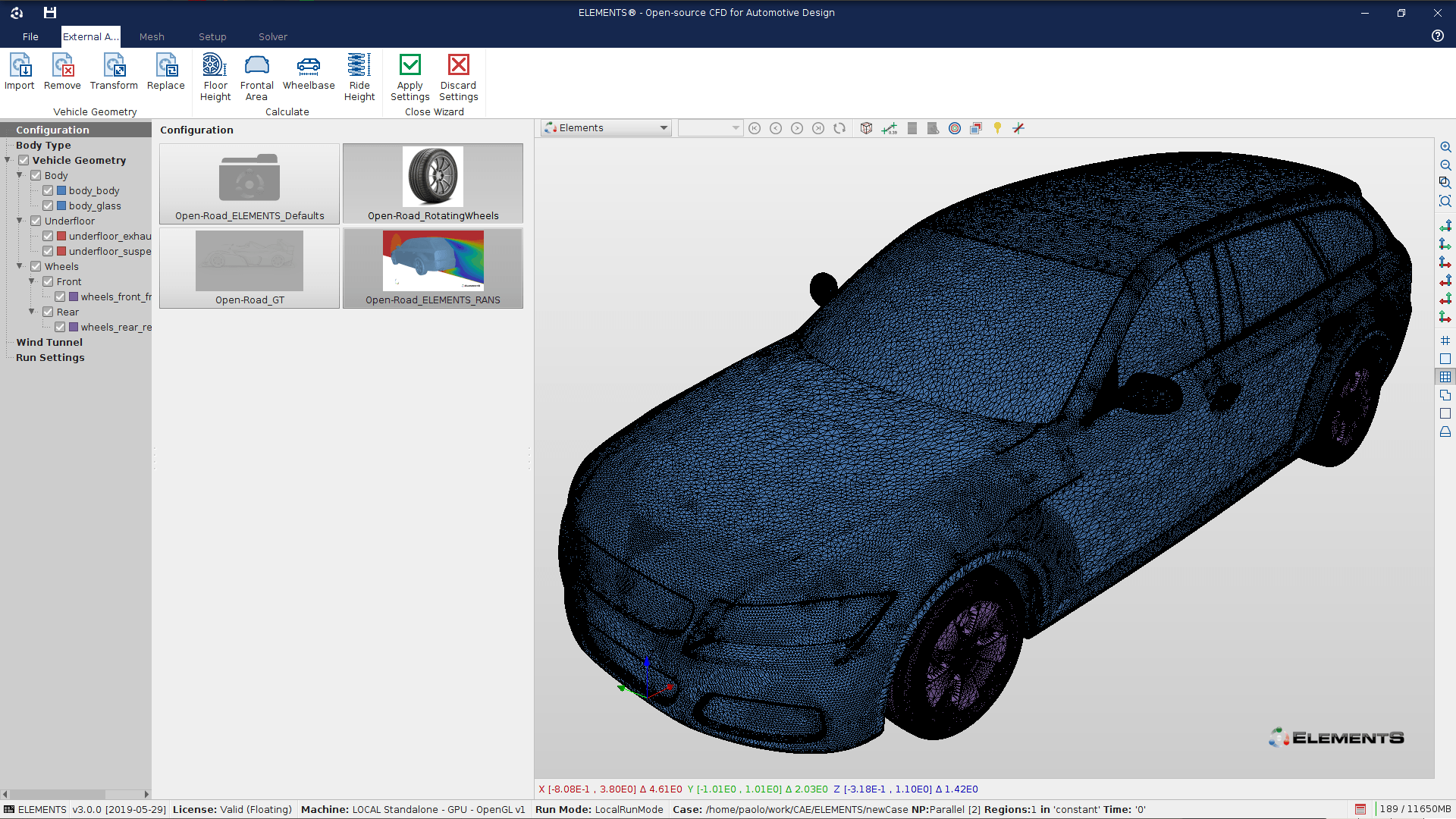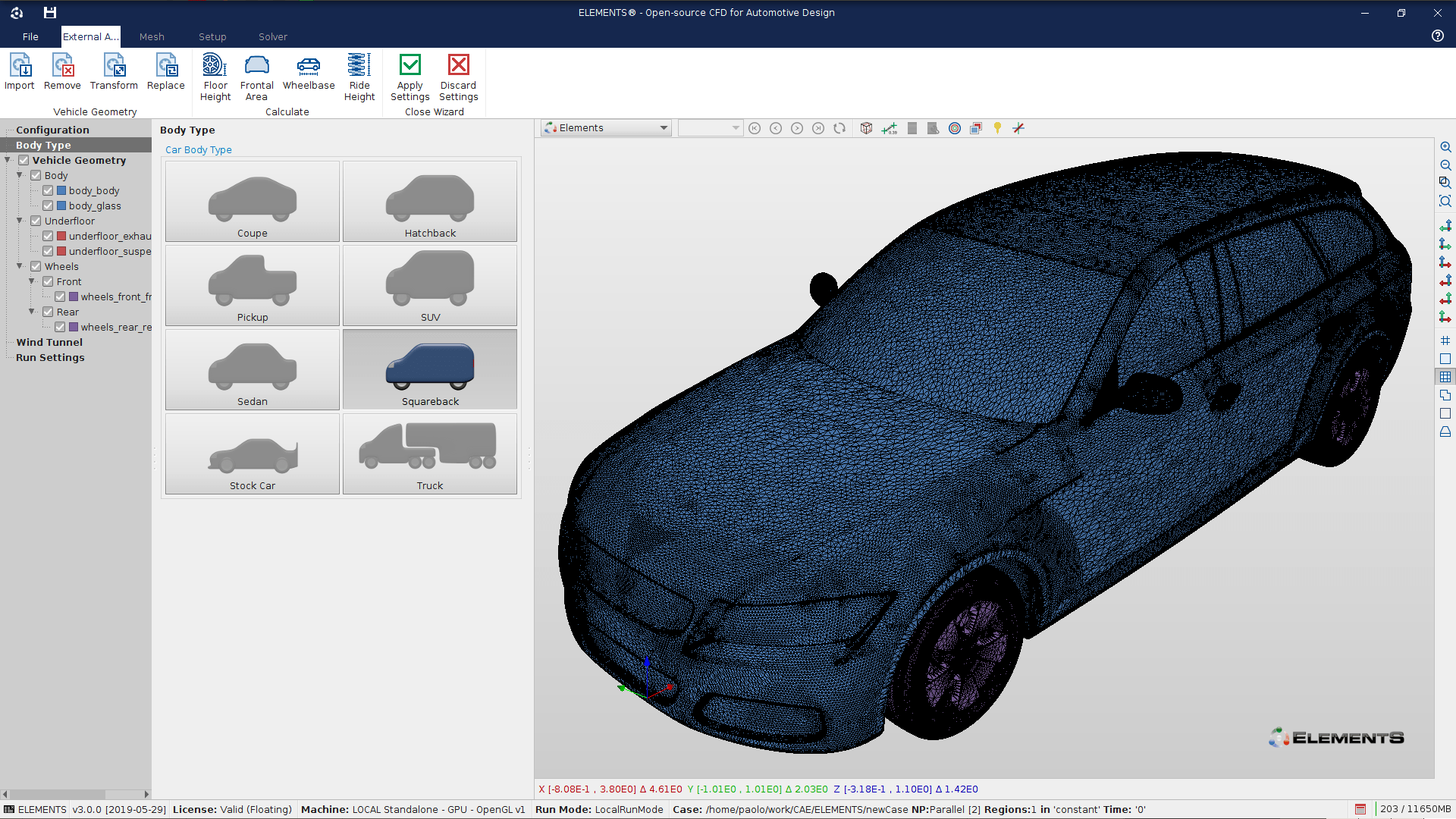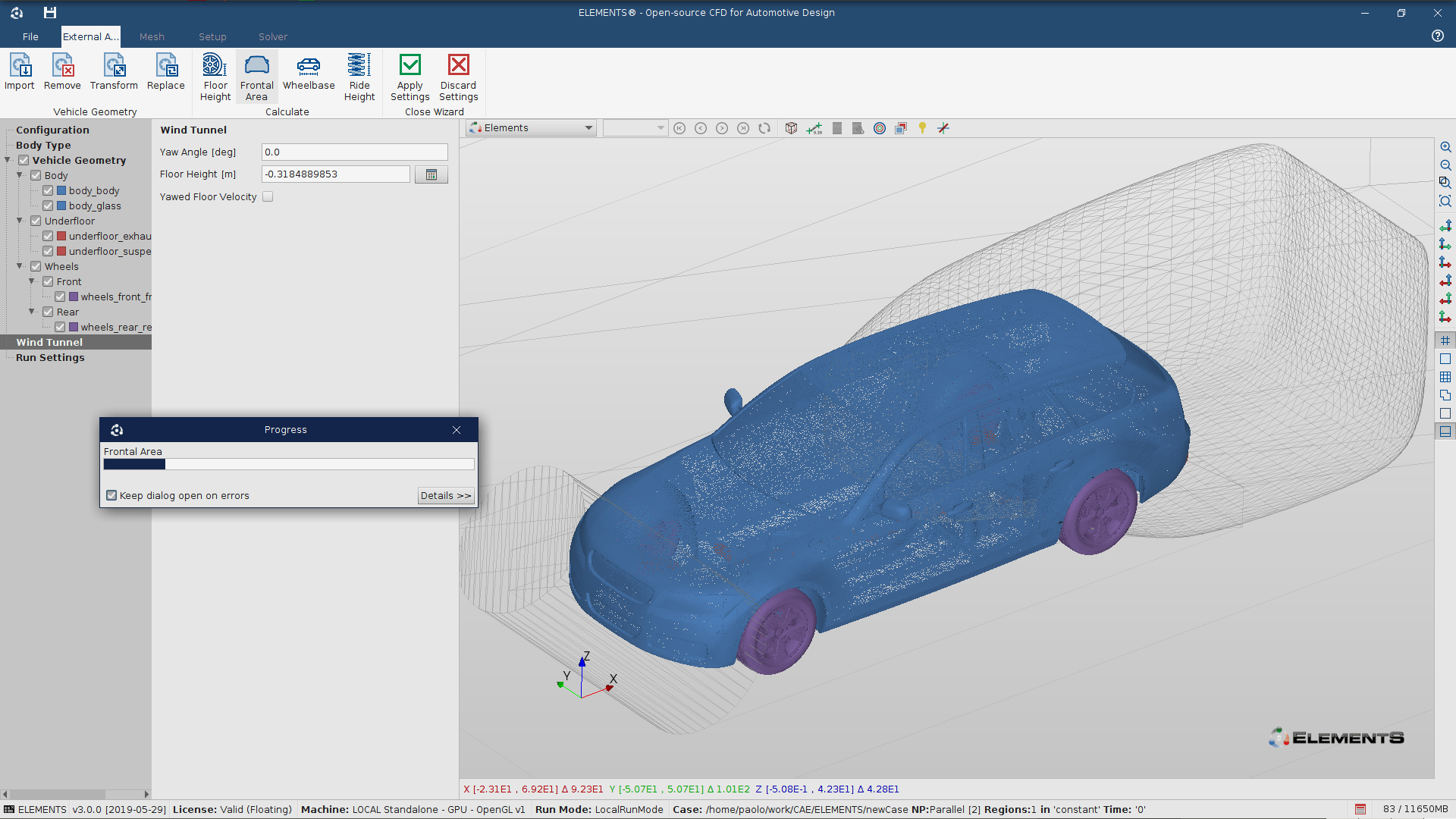ELEMENTS
Advanced CFD for Automotive Design
ELEMENTS is a groundbreaking CFD and optimisation software solution for vehicle design applications produced by Streamline Solutions LLC, a joint venture formed between ENGYS and the Auto Research Center (ARC). This product is aimed at bridging the gap between stylists, engineers and management in automotive OEMs, offering a more complete design integration to force shorter product to market cycles, improved vehicle efficiency and lower production costs.
ELEMENTS is powered by HELYX to offer a cost-effective solution that combines the best of automotive engineering design practices with the latest and most advanced open-source CFD and optimisation software developed by ENGYS, all within a unified easy-to-use platform.
FEATURES AND CAPABILITIES
ELEMENTS combines two simulation environments in one package: a dedicated virtual wind tunnel wizard for modelling external vehicle aerodynamics, and a general purpose CFD interface for solving other vehicle design applications (e.g. UHMT, HVAC, in-cabin flows, aeroacoustics, etc).
The software have been designed to help engineers and designers complete the following tasks:

Evaluate vehicle designs more efficiently using a completely new ribbon-based GUI layout focused on functional design.
Automate external vehicle aerodynamics calculations using a virtual wind tunnel wizard with fully configurable best simulation practices, automatic report creation, added support for rotating tyres/wheels, and new ride height and frontal area calculators.
Solve more complex engineering problems with improved CFD methods and tools for UHMT, HVAC, in-cabin flows and aeroacoustics, including better volume meshing, faster and more stable solvers, added support for multi-region CHT, new line-of-sight propagation methods for aeroacoustics, etc.
Leverage on-demand computing and cloud services with a dedicated client-server framework for working remotely via secure network connections.
Improved usability and productivity through powerful open-source CFD solvers and utilities developed and maintained by ENGYS.
The software is complemented by a comprehensive set of ancillary features and services, and can be expanded with the addition of the HELYX-Adjoint module for advanced shape or topology optimisation of vehicle aerodynamics and automotive systems, as well as HELYX-Coupled to access our block-coupled incompressible flow sover.
The main capabilities available in ELEMENTS at present include:
Automatic hex-dominant parallel meshing with automatic geometry healing and wrapping.
External Aerodynamics Wizard interface with fully customisable settings for automatic meshing and execution of vehicle external aerodynamics simulations, including predefined templates for a wide range of vehicle shapes.
General Purpose CFD interface for vehicle flow design applications, such as: UHTM, HVAC, aeroacoustics, water management, soiling, etc.
Fully-validated open-source solvers and methods based on extensive wind tunnel testing and experimental comparisons.
Specialised post-processing routines for advanced visualisation and automatic report generation.
Unique continous adjoint solver for topology and shape optimisation (requires HELYX-Adjoint add-on licence).
VIRTUAL WIND TUNNEL
The External Aerodynamic Wizard interface in ELEMENTS provides a complete Virtual Wind Tunnel environment to perform external aerodynamic simulations for any vehicle shape, scale and flow conditions. The software is delivered with a predefined set of simulation templates for different vehicle types, which have been validated against hundreds of wind tunnel measurements. This CFD methodology is compliant with the latest Worldwide harmonized Light vehicles Test Procedure (WLTP) in terms of drag prediction accuracy.
The External Aerodynamics Wizard interface can also be employed to develop and validate best practices in house for modelling external vehicle aerodynamics using the wide range of methods available in ELEMENTS. These practices can be saved as individual templates and publish in the GUI to provide engineers and aerodynamicists with the ability to analyse any vehicle in any given wind tunnel conditions. The best practices applied in all simulations are always the same, no matter who runs the software, thus providing consistent drag, lift and moment predictions at all times during the design process.







